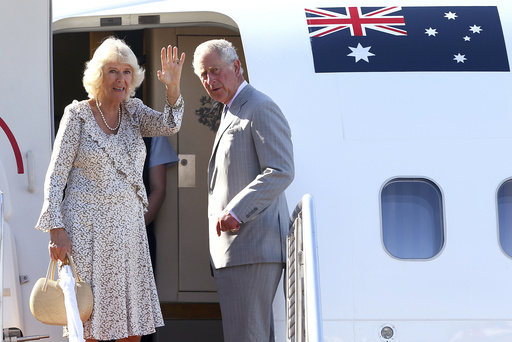
LONDON — At the age of 75 and currently facing a battle with cancer, King Charles III is set to embark on an extensive journey to Samoa this month. The purpose of this trip is to assume his role as the leader of the Commonwealth and to spotlight the severe threats that climate change poses to nations in the Pacific region.
He will also revisit Australia, a country that played a formative role during his teenage years. Charles spent six months at Timbertop school, located near Melbourne, in the 1960s, which allowed him to experience a more typical adolescence. This marks the first occasion since becoming king that he will travel to one of the 14 nations, other than the UK, where he serves as the sovereign.
The upcoming tour, scheduled from Friday until October 26, symbolizes a pivotal moment for the newly minted monarch, who is cautiously re-engaging with public responsibilities after taking a break following his illness diagnosis earlier this year. His decision to undertake this lengthy voyage reflects both his dedicated work ethic and a desire to leave a lasting impact on the monarchy after decades of being a royal heir.
According to Anna Whitelock, a history professor at City University in London, King Charles III aims to be more than just a symbolic figure, waiting for his eventual passing and the ascendance of Prince William. “He wants to be active in the world,” she emphasized.
Charles’ itinerary is ambitious, as he attempts to fortify the monarchy’s standing both domestically and internationally, two years after taking the throne. This visit poses a challenge, particularly in Australia, where a robust anti-monarchy movement has gained traction.
During their time in Australia, Charles and Queen Camilla have a full schedule, including visits to Parliament House in Canberra, the Australian War Memorial, and a memorial dedicated to Aboriginal and Torres Strait Islander people. The king is slated to meet with researchers Georgina Long and Richard Scolyer to discuss their advancements in melanoma research, an area of particular significance given the high rates of this cancer in Australia. Meanwhile, the queen will participate in discussions surrounding domestic violence.
Charles first stepped foot in Australia as a 17-year-old and spent two terms at Timbertop, where he engaged in various outdoor activities and formed friendships that contrasted starkly with his experiences at Gordonstoun in Scotland. His biographer, Jonathan Dimbleby, noted that this experience contributed significantly to his growth into a more self-assured young adult.
Upon his return to Australia, Charles comes not only as the king of the United Kingdom but also as the sovereign of Australia, a situation that is complex and challenging. In 1999, roughly 45% of Australians expressed their wish to move away from the monarchy. There are aspirations within Prime Minister Anthony Albanese’s Labour Party to hold a second referendum on this matter; however, those plans are currently stalled following a recent referendum that saw widespread rejection of increased political rights for Indigenous Australians.
Although there remains a considerable portion of the Australian populace that supports transitioning to a republic, Ian Kemish, a former Australian diplomat, states that this issue is not the primary focus of national discourse right now. Many Australians are channeling their attention toward pressing concerns like the economy and the rising cost of living.
The king’s visit may serve to strengthen the relationship between Australia and the UK, especially in light of a recent trilateral security agreement signed with the United States, known as AUKUS. This initiative involves the Australian navy receiving nuclear-powered submarines for the first time, indicating enhanced military collaboration among the three nations.
Kemish further noted, “In my view, we have bigger fish to fry here in Australia right now than the question of whether we should continue as part of a constitutional monarchy or become a republic.”
Above all, King Charles III has a longstanding passion for environmental issues, with climate change being a significant topic at the Commonwealth Heads of Government Meeting in Samoa. The Commonwealth consists of 56 independent nations, many of which share historical ties with the UK.
Throughout his life, Charles has established himself as a prominent advocate for environmental stewardship, urging world leaders to take collective action against carbon emissions that lead to global warming. He is attending the summit in Samoa as the head of the Commonwealth, a role significantly championed by his late mother, Queen Elizabeth II.
Island nations like Samoa find themselves on the frontline of the climate crisis, already grappling with the consequences of rising sea levels, ocean acidification, and more severe tropical storms, as indicated by the United Nations.
Whitelock acknowledged Charles as a “genuine eco-warrior,” respected worldwide for his advocacy on climate concerns. She believes that his focus on environmental issues aligns with his strengths, and it presents an opportunity for him to showcase a meaningful leadership role within the Commonwealth.
Kemish asserted that Charles’ presence in Samoa could be pivotal in drawing international attention to the dangers faced by Pacific island nations, stating, “These are the countries that will go below the surface of the ocean first, and where the impact can be seen most dramatically. It’s important for global attention to be brought to this part of the world. So yes, I think it’s a bit more than a photo opportunity. We certainly hope so.”
